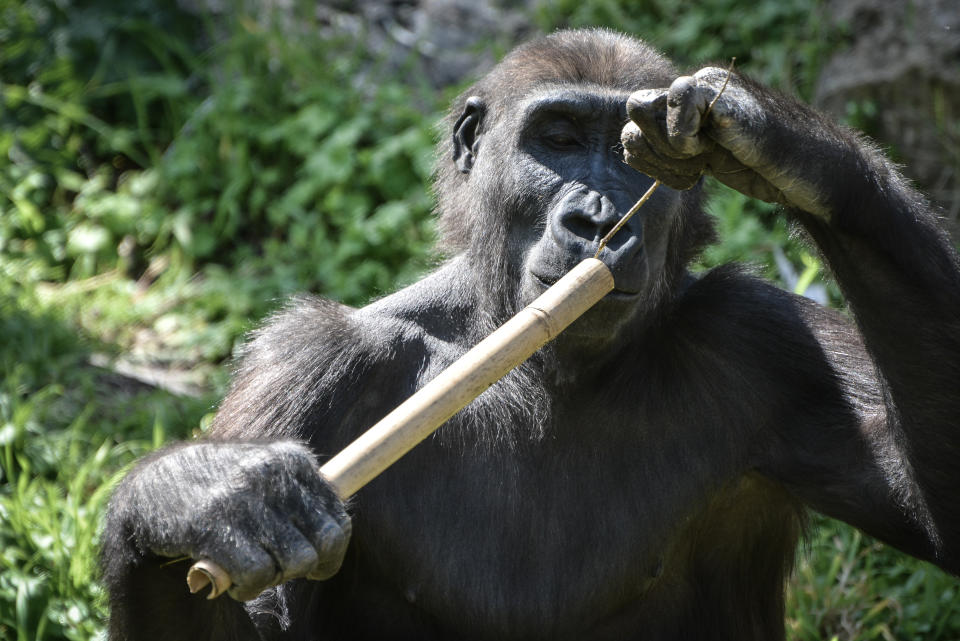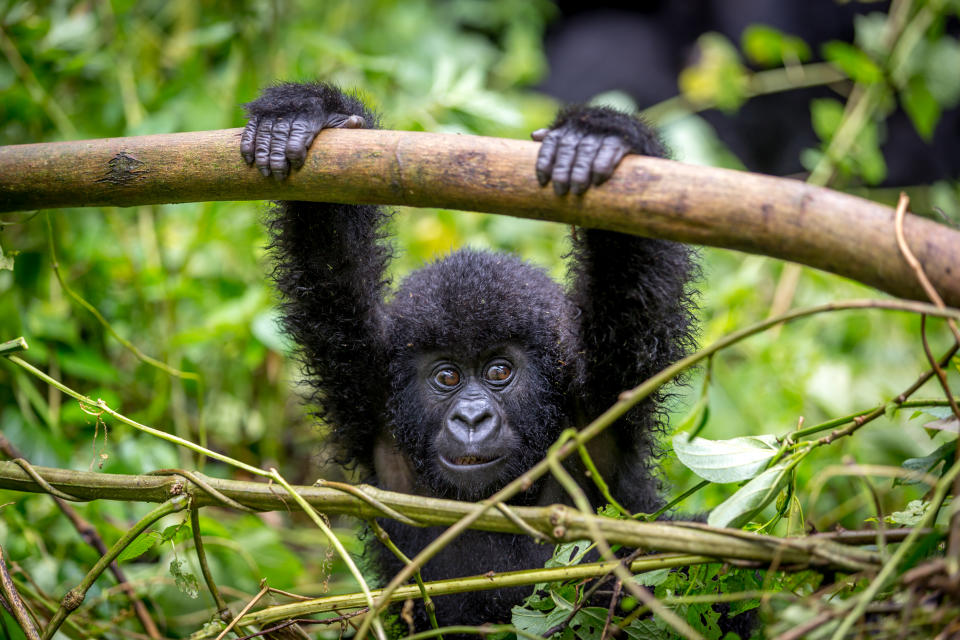Gorillas interact 'just like humans' in large social groups

Gorillas interact like humans in large social groups, and form bonds even with distant relations - making them far more like us than scientists thought.
The animals also develop social ‘tiers’ with striking parallels to human societies, researchers say.
The findings - based on the social interactions of gorillas in the Congo - could mean that human social structures evolved far earlier than previously believed.
Published in the journal Proceedings of the Royal Society B, the study used more than six years of data from two research sites in the Democratic Republic of Congo, where scientists documented the social exchanges of hundreds of western lowland gorillas.

Dr Robin Morrison, a biological anthropologist from the University of Cambridge, and the research team observed that gorillas live in small family units - a dominant male and several females with offspring - or as solitary male bachelors.
They analysed the frequency and length of associations.
Read More on Yahoo news
Documentary to expose how senior Labour figures tried to cover up anti-semitism
Kim Darroch resigns: Boris Johnson blamed for UK ambassador quitting over row with Donald TrumpAccording to the data, there was a tier of regular interaction - an average of 13 gorillas - that maps closely to dispersed extended family in traditional human societies, for example aunts, grandparents and cousins.
A further tier of association involved an average of 39 gorillas, similar to an 'aggregated group' that spends time together without necessarily being closely related.
'An analogy to early human populations might be a tribe or small settlement, like a village,' said Dr Morrison.
Where silverbacks were half-siblings they were more likely to be in the same tribe.
But more than 80% of the close associations detected were between more distantly related - or even apparently unrelated - silverbacks, the study says.
Dr Morrison commented: 'Females spend time in multiple groups throughout their lives, making it possible for males not closely related to grow up in the same natal group, similar to step-brothers.
'The bonds that form may lead to these associations we see as adults.
'If we think of these associations in a human-centric way, the time spent in each other's company might be analogous to an old friendship.'

 Yahoo News
Yahoo News 
